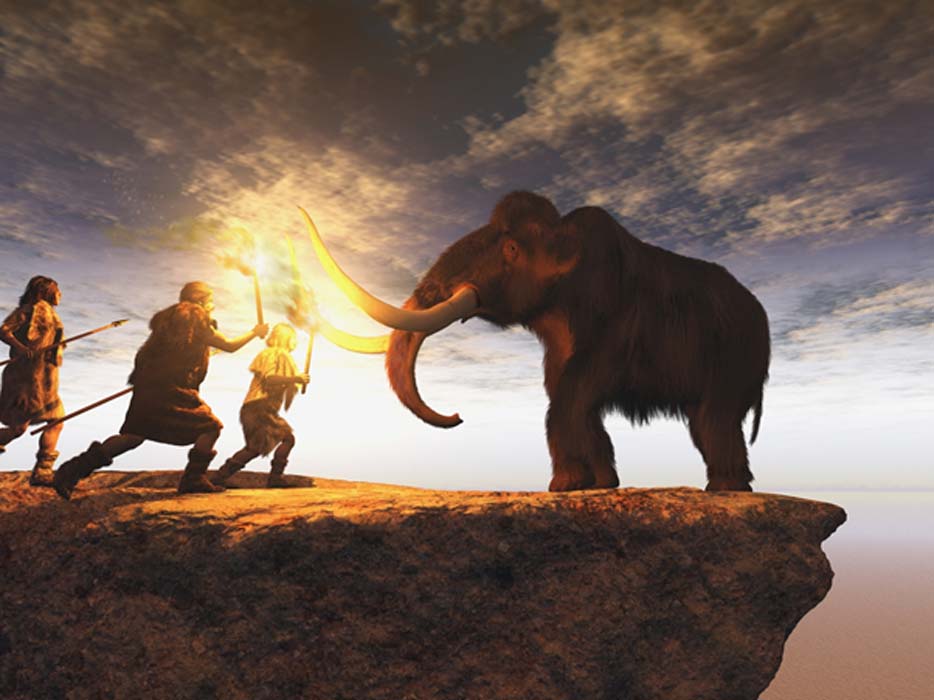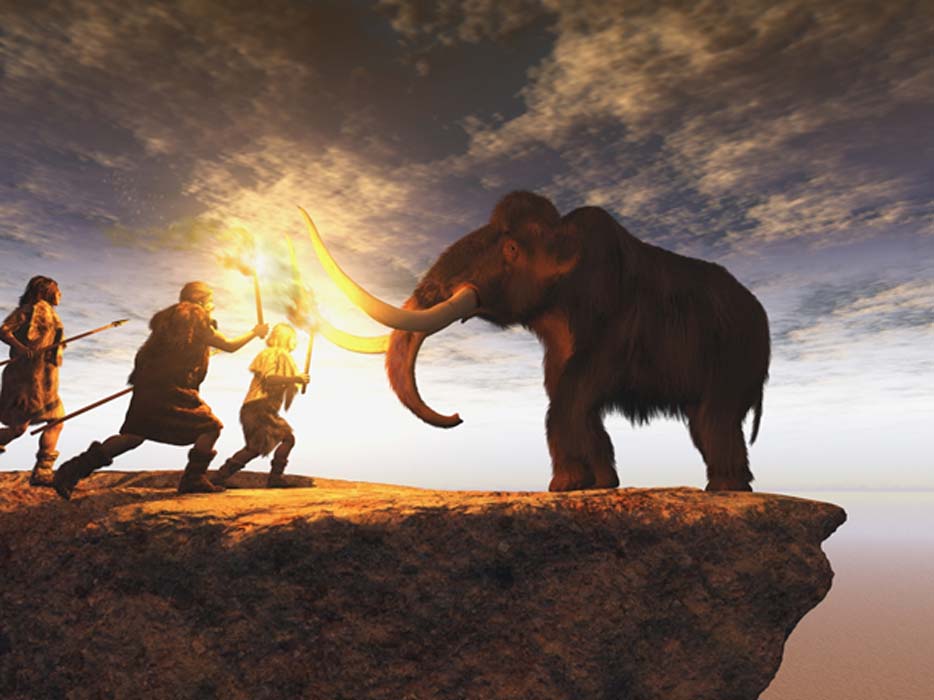

It has long been debated as to how our ancient ancestors were able to kill mammoths. In Poland, a discovery has been made that should throw more light how prehistoric hunters killed these giants, approximately 25,000 years ago. They have found a javelin in the rib bone of a mammoth and this may demonstrate that humans played a bigger part in the mammoths’ extinction than once believed.
The mammoths, or woolly elephants once roamed much of the Northern Hemisphere from North America to Europe. They flourished from approximately 5 million years ago and eventually died out “about 4,000 years ago” according to Fox News. Finds of mammoths are still being made in the permafrost of Siberia. The reasons for the extinction of these creatures is not known and it is a controversial subject. Some experts blame hunter-gathers for the species demise, but others argue that it was a result of mammoths’ failure to adapt to a new environment caused by rising temperatures after the end of the last Ice Age.
A Fragment of Flint Discovered in Mammoth Rib
In Poland researchers have found “110 mammoths that lived between 30,000 and 25,000 years ago” near Kraków, reports Livescience. It seemed that humans cooked and ate the animals in huge qualities at this site. They were uncovered in the early 2000s and since then experts have been sifting through them in order to learn more about the extinct creatures. Among the thousands of bones they noticed a rib that was damaged. Upon further investigation in February of 2018, they found a fragment of flint in the bone. Flint was used in the manufacture of arrow and spear heads in the prehistoric past and was a critical resource for Stone Age societies.

Polish researchers have found 110 mammoths that lived between 30,000 and 25,000 years ago. (P. Wojtal / Science in Poland)
LiveScience reports that upon further examination, it was established that the piece of flint was 0.3-inch-long (7 millimeters). The fragment was almost certainly from a spear head and it most likely shattered when it hit the bone in the mammoth’s body. The flint head had managed to pierce the thick fur and hide of the animal and this indicates that it was thrown with considerable force. Researchers believe that the spear would not have killed the animal straight away but may have wounded it fatally or allowed the hunters to finish it off in other ways.

The first direct evidence of this is a fragment of a 25,000 year old flint head discovered in Kraków, stuck in a mammoth rib. (P. Wojtal / Science in Poland)
A Prehistoric Javelin?
It seems likely that the fragment came from a javelin, a light spear that is typically thrown at a target. The use of javelins by prehistoric hunters was established after two important finds in Yakutia in Siberia. Here archaeologists found heads that were made out of the ivory from the extinct woolly rhino. The discovery in Poland shows that javelins were also used much further west. This find is very significant as it is the first evidence that hunters in Europe used weapons to take down the massive woolly mammoths.

Karl Hutchings, an archaeologist at Thompson Rivers University in Canada, holds a Clovis spear point. (Karl Hutchings / Thompson Rivers University)
Until recently, many researchers argued that hunters in the stone age could not have killed these gigantic creatures, who lived in herds, using only their primitive weapons. As a result, it is theorized that humans killed mammoths by driving them over cliffs or into specially dug pits, or that they preyed on those animals who were weak and old and had become separated from the herd. However, the flint head is proof that ancient humans actively stalked and hunted woolly elephants with weapons in the Paleolithic period.
Were Hunters Responsible for the Extinction of the Mammoths?
The find has important implications for the debate as to what caused the extinction of the mammoths because it demonstrates that humans could make lances and javelins in an area from Siberia to Poland and that they were more effective at hunting than once thought. This means that they could have killed many more mammoths than once believed, including the fit and able bodied, and this could have had a dramatic impact on the population of the animal.
The find of the fragment of flint in the rib of a mammoth could indicate that ancient humans played a bigger part in the extinction of these creatures than once believed. The results of the Polish study are unlikely to resolve the controversy as to what caused the extinction of the mammoth, however, they add to the body of evidence that humans were the main reason for their extinction.

Paleolithic painting of mammoth from the Rouffignac Cave. (Sinuhe20 / Public Domain)